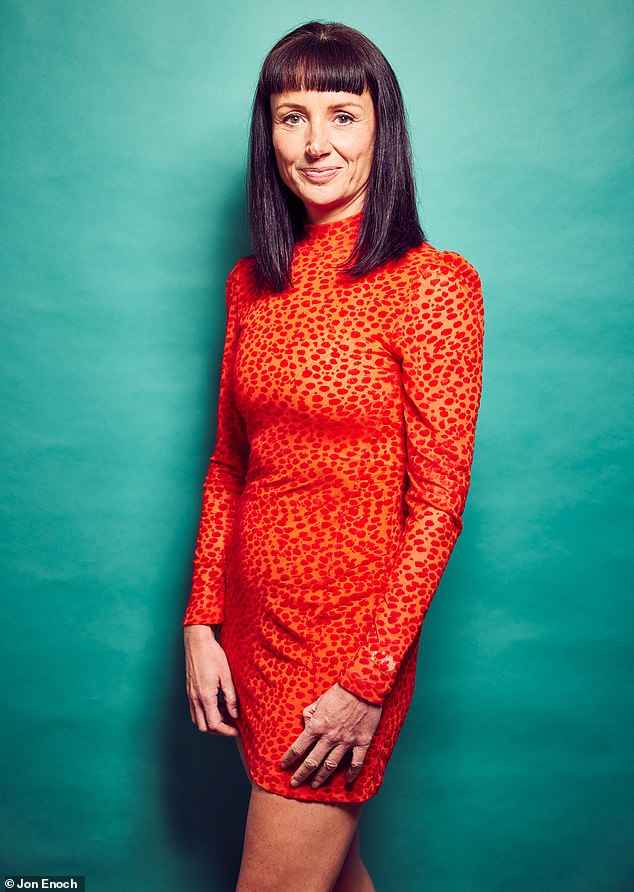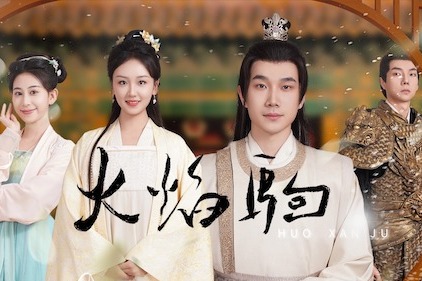Let me count the ways in which dating apps let you down. The fake profiles, the endless ‘datemin’ of swiping and messaging, the game playing and ghosting, the algorithms designed for driving repeat business rather than finding true love. What started as a genius idea with the birth of the smartphone has shrivelled into a steaming pile of disappointment.
After nearly four years on ‘the apps’, I’ve lived all the cliches. I’ve been love-bombed by a narcissist for whom nothing was too much trouble or expense (until he’d suckered me in), suffered a scary brush with someone who thought he owned me after two dates, endured the guillotine-like ‘I’m just not feeling it’, and tried many times to make it right with men who were clearly wrong.
Helen Down was disillusioned by years on dating apps – until love found her on LinkedIn
After leaving my ex-husband in 2020, my post-divorce affair with dating apps was sometimes wild, passionate and exhilarating, but it was more often exhausting, time-consuming and dispiriting.
At my ripe old age of 50, it seemed all the good men had been snapped up and midlife love was an impossibility.
Once I’d stopped annoying my neighbours by repeatedly wailing the chorus of Wolf Alice’s Don’t Delete The Kisses – ‘What if it’s not meant for me? Love’ – I committed to transforming all the disappointments, false hopes and many hilarious anecdotes into creative fuel for the novel I’m writing.
But then, out of the blue, it came. I found love. Or rather, it found me – and in the most unexpected place. Not Hinge, not Bumble. And certainly not Tinder. It found me on LinkedIn.
No, this wasn’t some romance scam. It began after I wrote an article about my disillusionment with middle-aged men on dating apps. Suddenly, strangers started messaging me. From university lecturers and TV producers to physiotherapists, teachers and ‘entrepreneurs’. Some were from colleagues of colleagues, but most were utterly random and I struggled to understand how they’d messaged me privately (although I now realise it was a privilege they’d paid for through a premium membership).
It began to feel a little creepy. Confusing at times too. That former client now asking for a coffee – was it a new business query, or a date request?
The LinkedIn invite that changed my life was very different, however. When the message pinged in my inbox in March this year, I felt less creeped out, more shocked. It was the man who’d flayed my 21-year-old heart three decades earlier. How very dare he!

Dating apps can let you down, thanks to everything from fake profiles to the endless ‘datemin’ of swiping and messaging, says Helen Down (picture posed by model)
Perhaps I should’ve felt angry. The audacity of getting back in touch after dumping me for a trip to Australia when I was still at art college and he’d already graduated. For a moment, that fragile 21-year-old whispered her fears in my ear. But I reassured her it was OK, all those years spent in the ring had made us wiser, bolder, more confident.
Mostly, though, I was damned curious. There waiting for me was a nostalgic Polaroid montage of our first meeting: New Year’s Eve, 1994. Inebriated, ebullient grins bursting with optimism. I was surprised he’d held on to – perhaps even treasured? – these photos for 30 years.
I was even more surprised when I read his message: ‘I hope you remember we had a brief but fairly intense relationship beginning with a bonkers New Year’s Eve and ending when I departed for Australia. I often think about that time with much fondness, but I wasn’t very kind at the end for which I apologise.’ I was shellshocked, and mildly chuffed, to find a piece of me had stayed with him.
It takes guts to do what he did. So I agreed to meeting over a couple of drinks in a London pub.
When we met weeks later, I remembered how he’d captured my heart so effortlessly. Funny, kind, intelligent, creative, gentle. The blond was now grey and he inevitably wasn’t quite as fresh-faced. Working silly hours in the music industry and raising two children will do that to a man (three intervening decades and one child also did it to this woman). Yet he was still, without doubt, very easy on the eye.
And, major bonus, he was untainted by the ruthlessness of contemporary dating. In the ten years since he’d separated from his now ex-wife, he kept falling in and out of relationships with friends and colleagues, and had never used a dating app. Oh my, how it showed. No game-playing, no grandstanding. Just straight-up vulnerability, honesty and an enthusiasm that felt genuine rather than desperate.
Over a wine-soaked Saturday afternoon, he entertained me with tales of how we survived off nothing but Smirnoff and Pringles, how I allegedly corrupted him (I beg to differ), how he cried the night before he left for Oz.
We’d only spent four months together, but those months were intense and showed more promise than my other longer-lasting relationships. He recalled far more about our time together than I did. As a scorned woman, I’d made a pact with myself never to think about him again. I threw my heart in the freezer and moved on, rampaging through the next relationships in heavy armour. This time around, though, forgiveness was easy.
Now, we’ve done our best to make up for 30 years of missed opportunities. Since April, we’ve laughed together, cried together, raved together, holidayed together, even been to the dump together. From the hi-octane to the mundane, we’ve fallen into an easy intimacy made possible by a trust-filled app-free connection.
Any sane person who’s spent more than six months on the dating app merry-go-round eventually feels sick. After exhausting yourself by taking the moral high ground, ghosting, breadcrumbing (maintaining interest by dropping crumbs of attention without commitment) and benching (stringing someone along as a back-up) suddenly become acceptable. I wonder sometimes if these apps are partly responsible for the apparent decline in decency and kindness.
Every generation has its dating challenges, but in midlife we have to deal with a dwindling pool of options and excess baggage. Also, we’re not digital natives. Taking selfies makes us recoil. It’s no wonder many women my age feel the apps aren’t designed for them. Guess what, they’re not.
‘Midlifers can feel uncomfortable with swiping, hooking up and talking to multiple people,’ explains Claire Macklin, divorce coach and author of Break Up: From Crisis To Confidence. ‘They often invest more early on and so have more to lose. If the date turns out to be a non-starter, it’s demoralising to have to start all again. It’s why more midlife women now pay for matchmaking services.’

Helen Down at her home in London
Ranging from £5,000 to £15,000, such services don’t come cheap. So what’s the alternative? It takes a brave soul to chat someone up in real life.
The same could be said of LinkedIn – and despite my experience, I don’t recommend it as a dating platform. Being asked out on LinkedIn feels even more unsolicited than being chatted up at a bar. And no, the platform isn’t about to launch a feature called ‘LinkedIn love’ – that’s an online myth that gained currency this summer. A LinkedIn spokesman told me: ‘Romantic advances and harassment of any form is a violation of our rules and does not belong on our platform.’
So, my story is not about encouraging you to use LinkedIn for dating. Sure, my ex did. But only because he had no other means. My story is about finding love after rejecting the apps.
That adage about things happening when you least expect them – it’s true. They also, it turns out, happen where you least expect them to. So perhaps it’s time to take Hinge – the app that’s ‘Designed to be Deleted’ – at its word. Go on. Delete it. And look elsewhere for love. Look up from your phone, maybe even look back to your past. But don’t give up looking entirely.


